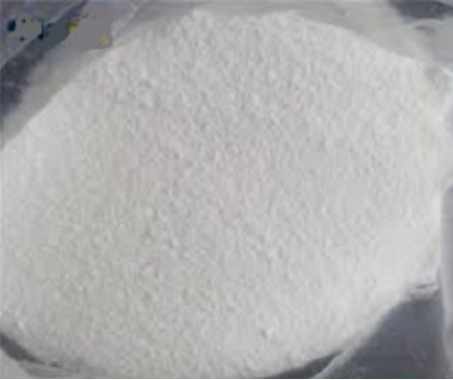Ursodeoxycholic Acid: History and Clinical Applications in Cancer Prevention
General Description
Ursodeoxycholic acid (UDCA) is a secondary bile acid issued from the transformation of (cheno)deoxycholic acid by intestinal bacteria, acting as a key regulator of the intestinal barrier integrity and essential for lipid metabolism. UDCA is also a long-established drug, largely used for the dissolution of cholesterol gallstones, the treatment of primary biliary cholangitis and other hepatobiliary disorders. This article will introduce its discovery history and anticancer effect.

Figure 1. Ursodeoxycholic acid
History
Discovery and Naming
At the very beginning of the 20th century, after two expeditions to explore Greenland, Olof Hammarsten (Uppsala, Sweden) isolated a new bile acid from a polar bear (Thalarctos maritimus) and named it “ursocholeinsäure”. More than twenty-five years later, Masato Shoda (Okayama, Japan) was able to crystallize this new bile acid from a preparation of black bear (Ursus americanus) bile and renamed the product “Ursodesoxycholsäure” in 1927. Keeping the urso root-word for bear (ursus in Latin); the history was enrooted. The chemical structure was determined in 1936. The first total synthesis of Ursodeoxycholic acid was published in 1954 and a few years later UDCA was identified as a minor constituent of human bile by Jan Sjövall in 1959 (Stockholm, Sweden). 1
Therapeutic Applications and Medical Advancements
Since the 1950s, the pharmaceutical company Tokyo Tanabe had marketed Ursodeoxycholic acid as a liver tonic, based on the legendary therapeutic effects of bear bile. Testing in Human were initiated in the 1960s–70s and the first prospective therapeutic trials of gallstone dissolution with UDCA were conducted around 1975 by Isao Makino, confirmed by several studies in the late 1970s-early 1980s. The drug is approved and marketed in France since 1980 and in the EU, as well as outside the EU for gallstone dissolution. The process for the preparation of UDCA was first patented in 1980.
In 1987, Ulrich Leuschner (Frankfurt, Germany) noted that Ursodeoxycholic acid ingestion improved biochemical parameters in patients with primary biliary cirrhosis and the same year, Raoul Poupon (Paris, France) published the results of a landmark clinical study on the long-term use of UDCA for the treatment of patients with primary biliary cirrhosis (PBC, now designated primary biliary cholangitis). Many clinical studies will then confirm the medical benefit of UDCA and the US FDA approved the use of the drug for the treatment of PBC in 1998. For almost two decades, UDCA was the only approved treatment for PBC, until July 2016 when the FDA granted accelerated approval to obeticholic acid for the treatment of PBC, in combination with UDCA in adults with an inadequate response to UDCA or as monotherapy in adults unable to tolerate UDCA. The drug received a marketing authorization from the European Medical Agency in December 2016. The anticancer potential of UDCA was underlined in the late 1990s. The involvement of secondary bile acids, including Ursodeoxycholic acid, in colorectal carcinogenesis was noted in 1995 and the design of anticancer UDCA analogues started in 1997. Over the past 20 years, many studies have highlighted the hepato-protective properties of UDCA and its capacity to inhibit tumour cell proliferation. 1
Clinical Applications in Cancer Prevention
Inflammatory bowel disease (IBD) is a predisposing factor for colitis-associated cancer (CAC). The association between bile acids and the gut microbiota has been demonstrated in colon neoplasia; however, the effect of ursodeoxycholic acid (UDCA) on gut microbiota alteration in development of colitis and CAC is unknown. Qilang He and colleagues' analysis of publicly available datasets demonstrated the association of UDCA treatment and accumulation of Akkermansia. UDCA-mediated alleviation of DSS-induced colitis was microbially dependent. UDCA treatment significantly upregulated Akkermansia colonization in a mouse model. Colonization of Akkermansia was associated with enhancement of the mucus layer upon UDCA treatment as well as activation of bile acid receptors in macrophages. UDCA played a role in CAC prevention and treatment in the AOM-DSS and ApcMin/+-DSS models through downregulation of inflammation and accumulation of Akkermansia. This study suggests that ursodeoxycholic acid intervention could reshape intestinal gut homeostasis, facilitating colonization of Akkermansia and preventing and treating colitis and CAC.2
References:
[1] JEAN-FRAN?OIS GOOSSENS C B. Ursodeoxycholic acid and cancer: From chemoprevention to chemotherapy[J]. Pharmacology & Therapeutics, 2019, 203. DOI:10.1016/j.pharmthera.2019.107396.[2] QILANG HE. Therapeutic role of ursodeoxycholic acid in colitis-associated cancer via gut microbiota modulation.[J]. ACS Chemical Health & Safety, 2023. DOI:10.1016/j.ymthe.2022.10.014.
You may like
Related articles And Qustion
See also
Lastest Price from Ursodeoxycholic acid manufacturers

US $0.00/kg2025-09-30
- CAS:
- 128-13-2
- Min. Order:
- 1kg
- Purity:
- 98%
- Supply Ability:
- 1000kg

US $0.00/kg2025-09-02
- CAS:
- 128-13-2
- Min. Order:
- 1kg
- Purity:
- 99%min
- Supply Ability:
- 20tons



